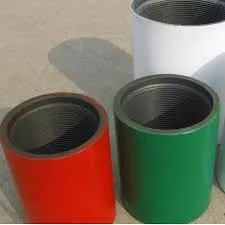- Afrikaans
- Albanian
- Amharic
- Arabic
- Armenian
- Azerbaijani
- Basque
- Belarusian
- Bengali
- Bosnian
- Bulgarian
- Catalan
- Cebuano
- Corsican
- Croatian
- Czech
- Danish
- Dutch
- English
- Esperanto
- Estonian
- Finnish
- French
- Frisian
- Galician
- Georgian
- German
- Greek
- Gujarati
- Haitian Creole
- hausa
- hawaiian
- Hebrew
- Hindi
- Miao
- Hungarian
- Icelandic
- igbo
- Indonesian
- irish
- Italian
- Japanese
- Javanese
- Kannada
- kazakh
- Khmer
- Rwandese
- Korean
- Kurdish
- Kyrgyz
- Lao
- Latin
- Latvian
- Lithuanian
- Luxembourgish
- Macedonian
- Malgashi
- Malay
- Malayalam
- Maltese
- Maori
- Marathi
- Mongolian
- Myanmar
- Nepali
- Norwegian
- Norwegian
- Occitan
- Pashto
- Persian
- Polish
- Portuguese
- Punjabi
- Romanian
- Russian
- Samoan
- Scottish Gaelic
- Serbian
- Sesotho
- Shona
- Sindhi
- Sinhala
- Slovak
- Slovenian
- Somali
- Spanish
- Sundanese
- Swahili
- Swedish
- Tagalog
- Tajik
- Tamil
- Tatar
- Telugu
- Thai
- Turkish
- Turkmen
- Ukrainian
- Urdu
- Uighur
- Uzbek
- Vietnamese
- Welsh
- Bantu
- Yiddish
- Yoruba
- Zulu
Understanding the Concept and Applications of Bull Plug in Various Industries
Understanding Bull Plug Definition and Applications
In the realm of industrial and mechanical engineering, the term bull plug refers to a specific type of plug or closure utilized in various contexts, particularly in piping systems. The bull plug serves a critical role in maintaining the integrity of systems that transport fluids or gases. This article explores the definition of a bull plug, its characteristics, applications, and importance in different industries.
Definition of Bull Plug
A bull plug is designed to provide a secure seal at the end of a pipe or fitting, effectively closing off the flow of fluid or gas. Its primary purpose is to restrict the passage of substances within a piping network, ensuring that no leakage occurs from the open end of the pipe. Unlike standard plugs, bull plugs are typically larger and can handle higher pressure applications due to their robust construction.
These plugs come in a variety of materials, including steel, brass, and plastic, which allows them to be used in diverse environments. The choice of material typically depends on the nature of the fluid being contained, the temperature, and the overall pressure specifications of the system.
Characteristics of Bull Plugs
1. Shape and Design Bull plugs usually feature a conical or tapered design, which allows them to fit snugly into the opening of a pipe. This shape is essential for ensuring a tight seal and preventing any leakage.
2. Durability Given their function, bull plugs are manufactured to withstand significant levels of stress and strain. They are often coated or treated to resist corrosion, especially when used in chemical or high-temperature applications.
3. Variety of Sizes Bull plugs come in a range of sizes to accommodate different pipe diameters. This flexibility makes them suitable for various industrial applications.
Applications of Bull Plugs
bull plug definition

Bull plugs are widely used across various sectors, including
1. Oil and Gas Industry In this industry, bull plugs are crucial for sealing off sections of pipelines during maintenance procedures. They help ensure that operations can be conducted safely without the risk of spills.
2. Water Treatment Facilities Bull plugs assist in the management of water systems by preventing potential leaks in pipes that transport treated or raw water. They are integral in maintaining the integrity of water supply systems.
3. Chemical Manufacturing In facilities where chemicals are handled, bull plugs provide essential safety measures by securely sealing containers and piping systems. This prevents unwanted exposure or contamination caused by leaks.
4. Construction In various construction applications, bull plugs are utilized in temporary setups where closures are required for pipes or ducts until permanent fixtures are installed.
Importance of Bull Plugs
The significance of bull plugs extends beyond their primary function of sealing. They also play a vital role in ensuring safety within industrial settings. By preventing leaks, bull plugs help mitigate the risk of accidents related to hydraulic failures, chemical spills, or gas leaks. Furthermore, they contribute to the efficiency of plant operations by maintaining the desired pressure levels throughout the system.
Moreover, the use of bull plugs aids in compliance with regulatory standards. Many industries are subject to stringent environmental and safety regulations; using effective sealing solutions like bull plugs is essential in adhering to these guidelines.
Conclusion
In summary, bull plugs are essential components in a variety of industrial applications, offering secure sealing for piping systems and ensuring safety and efficiency. Their robust construction, adaptability, and durability make them valuable in maintaining the integrity of fluid and gas transport systems. As industries continue to evolve, the importance of reliable sealing solutions like bull plugs will remain pivotal in promoting both safety and operational effectiveness. Understanding their definition and application is crucial for engineers and technicians working with complex piping systems.
-
Tubing Pup Joints: Essential Components for Oil and Gas OperationsNewsJul.10,2025
-
Pup Joints: Essential Components for Reliable Drilling OperationsNewsJul.10,2025
-
Pipe Couplings: Connecting Your World EfficientlyNewsJul.10,2025
-
Mastering Oilfield Operations with Quality Tubing and CasingNewsJul.10,2025
-
High-Quality Casing Couplings for Every NeedNewsJul.10,2025
-
Boost Your Drilling Efficiency with Premium Crossover Tools & Seating NipplesNewsJul.10,2025







